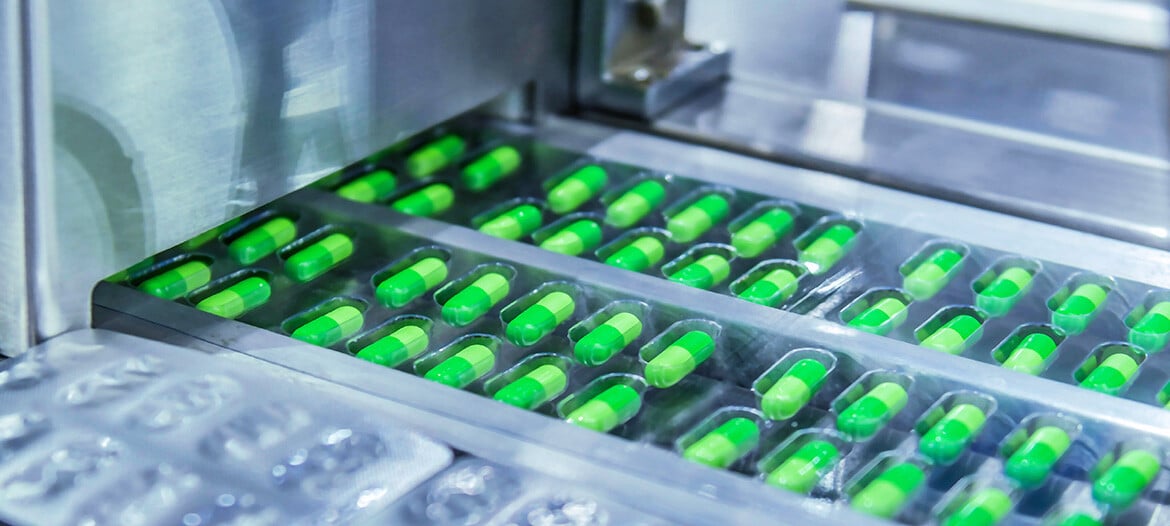Your Questions Answered: Common ULT Qualification Mistakes to Avoid
The following questions were posed recently during a Leading Minds Network virtual panel discussion featuring ELPRO GxP experts Melanie Krüger and Marisa Remsing. Answers to those questions are provided below. For more information about ELPRO-BUCHS AG GxP services, contact us at gxp@elpro.com or visit ELPRO.com today.
Q1: If a ULT has two compartments, should a hot and cold spot be chosen for each compartment?
If the compartments are completely separated from each other, then yes. A hot spot and cold spot should be defined for each compartment.
Q2: How do you guarantee data integrity when transferring logger data to a PC?
ELPRO data loggers have data storage and analytical software that complies fully with applicable regulatory requirements (i.e. FDA 21 CFR Part 11).
Q3: If a temperature excursion is identified during a study, what is the best approach to solve the issue after a CAPA is implemented? Should one conduct the whole mapping study again or is it enough to reassess only the non-compliant?
The mapping should be repeated with all mapping positions. Implementation of CAPAs also means that something in the system was changed. After system changes (it does not matter if in regards to cooling system, shelving, or something else) a re-mapping is recommended. Why? Only assuming that the good mapping positions from the first mapping will show the same behavior, after implementation of the CAPA, does not provide proof and therefore is not compliant.
Q4: How much is the environment allowed to change, without a need to re-qualify an ULT?
If you replace the ULT in a different room with completely different surrounding conditions, it should be re-qualified, because you do not know how the ULT works in the different environment.
Q5: Is there any guideline or legal timeline for the calibration period of data loggers? It is generally one year?
According to WHO (Technical Supplement to WHO Technical Report Series, No. 961, 2011; Supplement 8, Annex 9), the calibration needs to be repeated annually if technically possible. Calibration should be valid within the current year.
Q6: What would the percentage of tolerance be for faulty data loggers (no data obtained or corrupted data) in the mapping of ULTs?
There is no recommended value given by the guidelines. It needs to be assessed risk-based.
Q7: Is there a need to verify the data loggers after each run?
It should be differentiated between single use and multi-use data loggers, see WHO (Technical supplement to WHO Technical Report Series, No. 961, 2011; Supplement 8, Annex 9).
Q8: Are Open Door and Power Failure tests required by guidelines?
WHO and ISPE guidelines tell us that those tests are useful to establish internal procedures. They are not obligatory for finding hot and cold spots.
Q9: Have you ever encountered overcompensation or overshooting? For example, beyond the lower acceptance criteria of the freezer after a door opening during an operating qualification (OQ). Can you recommend how this can be avoided?
This happens often. It needs to be assessed to determine whether the corresponding deviations resulted in product critical temperatures (considering duration and absolute values). In case of doubt, the settings of the cooling system need to be adjusted (set point change or reaction strength on temperature changes). Adjustment of cooling cycle settings can help.
Q10: What is the worst case state, empty or loaded, and why?
According to ISPE Good Practice Guide (2021) both states are worst case states. Empty state is a worst case because of the minimum interruption of airflow and minimum of thermal mass. Loaded state is a worst case because of the maximum interruption of airflow and maximum of thermal mass.
Q11: For a ULT, is the continuous monitoring sensor (as per hot/cold spot) open air or in a buffer solution?
This depends on the stored product and the given stability specification from the manufacturer of the product. ISPE also provides recommendations.
Q12: How many times should mapping be repeated during a performance qualification (PQ)?
PQ mappings, as part of a qualification, should be repeated seasonally (summer and winter), if the unit is affected by outside conditions. If the unit is located in a thermally controlled environment, and nothing in the system changes, there is no need for a PQ repetition.
Q13: What factors are used determine the ideal number of data logger? Please advise on the guidelines for the same:
Compare to ISPE Good Practice Guide (ISPE Good Practice Guide: Controlled Temperature Chambers Version 2.0 2021) and WHO (Technical supplement to WHO Technical Report Series, No. 961, 2011; Supplement 8 Annex 9)
Q14: What is the acceptance criteria for calibration?
For Germany, see DIN1319-1. For other countries see corresponding guidelines.
Q15: Would qualifying multiple units at once be more beneficial than one at a time?
This is more beneficial as long as each unit (even if it is the same model) is qualified on its own.
Q16: For temperature mapping, do you prefer separate data loggers or a multi-channel data logger unit?
It all depends on the size and the requirements of the project. Both have advantages and disadvantages. For mappings, multi-channel data loggers are only applicable for use on very small units. Otherwise, the probes need to have long cables to ensure a distance of 5-10 meters (e.g. in a huge warehouse). It is not prohibited to use multi-channel data loggers as long as data logger requirements of the guidelines still apply. However, it is more practical to use one data logger for each measuring point.
Q17: If you want to map a -80 °C freezer, what calibration points would you suggest?
Technical supplement to WHO Technical Report Series, No. 961, 2011; Supplement 8 Annex 9: “Calibration temperature points used for the calibration of EDLMs should cover the required temperature range for each of the areas being studied. In general there should be one calibration point below the low end of the range, one calibration point in the middle of the range, and one calibration point above the high end of the range.”
Q18: Are there individual calibration certificates for all data loggers? We do not accept a family approach.
Yes. Each data logger used needs to be calibrated separately. No family approaches are accepted.
Q19: What can be done if data loggers come up missing in a project? It depends on the place of the missing data. The criticality depends on the positions of the data loggers. If a hot or cold spot is determined during OQ and now these points are missing in the PQ, that is critical.
Q20: Where should monitoring sensors be placed, and how many? Also, should it be based upon average or absolute measurements, or other calculations?
At a minimum, sensors should be placed on the most critical points of the mapping (e.g. hot spot and cold spot). Additional spots risk based and/or covering all spaces.
Q21: How often does one need to remap? Every year? Every 3 years?
No time period is specified by the guidelines. It is only recommended to remap if there are any changes in the system. Everything else can be specified in company procedures. (It is a good idea to define periodic risk-based requalification.)
Q22: Would a loaded ULT hold cold temperatures longer than an empty ULT?
According to experiences and thermal mass theory, this is correct. A fully loaded ULT represents a more inert system that reacts slower to thermal changes.
Q23: What do you do if there is a measurement point that is out of specifications (i.e. too high), but all other measurement points are ok ?
This needs to be assessed on a case-by-case basis. There is no general guideline for this.
Q24: Are there guidelines for requalification of ULTs?
Yes. See Guidelines of 5 November 2013 on Good Distribution Practice of medicinal products for human use.








Leave a Comment